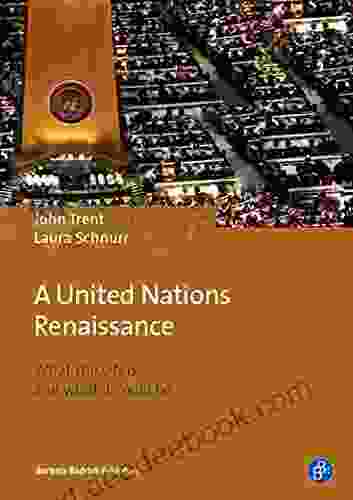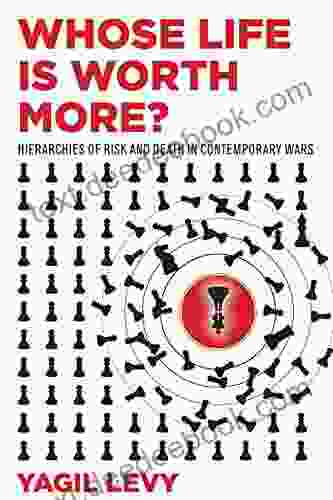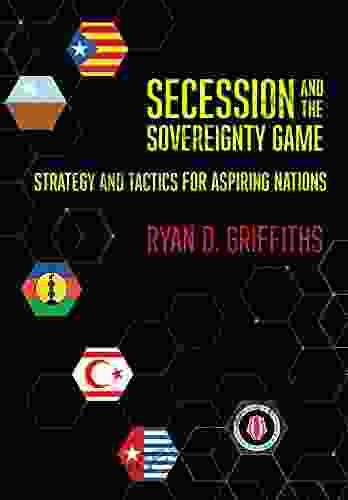Hierarchies of Risk and Death in Contemporary Wars: A Comparative Analysis of the United States, the United Kingdom, and France

War is a brutal and often deadly affair. In recent years, the United States, the United Kingdom, and France have all been involved in major wars in Iraq, Afghanistan, and Libya. These wars have resulted in the deaths of thousands of soldiers and civilians.
5 out of 5
| Language | : | English |
| File size | : | 4581 KB |
| Text-to-Speech | : | Enabled |
| Screen Reader | : | Supported |
| Enhanced typesetting | : | Enabled |
| Word Wise | : | Enabled |
| Print length | : | 153 pages |
The risks of war are not evenly distributed. Some soldiers and civilians are more likely to be killed or injured than others. This is due to a number of factors, including the type of warfare being conducted, the level of training and equipment available to soldiers, and the social and economic status of civilians.
In this article, we will examine the hierarchies of risk and death in contemporary wars. We will focus on the experiences of the United States, the United Kingdom, and France. We will argue that these hierarchies are shaped by a number of factors, including the political and economic interests of the states involved, the nature of the conflicts in which they are engaged, and the social and cultural norms of the societies from which they come.
The Political Economy of Risk
The political economy of risk refers to the ways in which political and economic factors shape the distribution of risk in society. In the case of war, the political economy of risk is shaped by the interests of the states involved. States that are more powerful and wealthy are able to impose greater risks on their adversaries. They can do this by investing in more advanced weapons and technologies, by sending more troops into battle, and by providing less support for their own soldiers and civilians.
The United States is the most powerful and wealthy state in the world. It has the largest military budget and the most advanced weapons systems. This gives it a significant advantage over its adversaries in terms of risk. The United States is able to impose greater risks on its enemies without incurring as many risks itself.
The United Kingdom and France are also powerful and wealthy states, but they are not as powerful as the United States. This means that they are more constrained in terms of the risks they can impose on their adversaries. The United Kingdom and France have to be more careful about how they use their military power. They have to weigh the risks and benefits of military action more carefully.
The Nature of Conflict
The nature of conflict also shapes the hierarchies of risk and death in contemporary wars. Some conflicts are more dangerous than others. This is due to a number of factors, including the intensity of the fighting, the type of weapons being used, and the terrain in which the conflict is taking place.
The wars in Iraq and Afghanistan are two of the most dangerous conflicts in the world. The fighting in these wars is intense and the weapons being used are deadly. The terrain in both countries is also very challenging. This makes it difficult for soldiers to operate and increases the risk of death or injury.
The wars in Libya and Syria are also dangerous, but they are not as dangerous as the wars in Iraq and Afghanistan. The fighting in these wars is less intense and the weapons being used are not as deadly. The terrain in both countries is also less challenging. This makes it easier for soldiers to operate and reduces the risk of death or injury.
Social and Cultural Norms
Social and cultural norms also shape the hierarchies of risk and death in contemporary wars. These norms influence the way that societies view war and the way that they treat their soldiers and civilians.
In the United States, there is a strong tradition of military service. This tradition dates back to the Revolutionary War. Americans are proud of their military and they are willing to support it. This support is reflected in the way that the United States treats its soldiers. Soldiers are given good pay and benefits. They are also provided with the best possible training and equipment.
In the United Kingdom and France, there is also a tradition of military service. However, this tradition is not as strong as it is in the United States. This is due to a number of factors, including the smaller size of the British and French militaries and the different experiences of these countries in recent wars. As a result, the British and French are not as willing to support their militaries as the Americans are. This is reflected in the way that these countries treat their soldiers. Soldiers in the United Kingdom and France are not given as good pay and benefits as soldiers in the United States. They are also not provided with the same level of training and equipment.
The hierarchies of risk and death in contemporary wars are shaped by a number of factors, including the political and economic interests of the states involved, the nature of the conflicts in which they are engaged, and the social and cultural norms of the societies from which they come. These hierarchies have a significant impact on the conduct of war and the experiences of those who fight and die in it.
The United States is the most powerful and wealthy state in the world. This gives it a significant advantage in terms of risk. The United States is able to impose greater risks on its adversaries without incurring as many risks itself. This advantage is reflected in the way that the United States conducts war. The United States is more likely to use military force than other states. It is also more likely to use overwhelming force. This has led to a high number of casualties in the wars that the United States has fought in recent years.
The United Kingdom and France are also powerful and wealthy states, but they are not as powerful as the United States. This means that they are more constrained in terms of the risks they can impose on their adversaries. The United Kingdom and France have to be more careful about how they use their military power. They have to weigh the risks and benefits of military action more carefully. This has led to a lower number of casualties in the wars that the United Kingdom and France have fought in recent years.
The social and cultural norms of a society also have a significant impact on the way that it conducts war. In the United States, there is a strong tradition of military service. This tradition has led to a high level of support for the military. This support is reflected in the way that the United States treats its soldiers. Soldiers in the United States are given good pay and benefits. They are also provided with the best possible training and equipment. This has led to a high level of morale among the US military.
In the United Kingdom and France, there is also a tradition of military service. However, this tradition is not as strong as it is in the United States. This is due to a number of factors, including the smaller size of the British and French militaries and the different experiences of these countries in recent wars. As a result, the British and French are not as willing to support their militaries as the Americans are. This is reflected in the way that these countries treat their soldiers. Soldiers in the United Kingdom and France are not given as good pay and benefits as soldiers in the United States. They are also not provided with the same level of training and equipment. This has led to a lower level of morale among the British and French militaries.
The hierarchies of risk and death in contemporary wars have a significant impact on the conduct of war and the experiences of those who fight and die in it. These hierarchies are shaped by a number of factors, including the political and economic interests of the states involved, the nature of the conflicts in which they are engaged, and the social and cultural norms of the societies from which they come.
5 out of 5
| Language | : | English |
| File size | : | 4581 KB |
| Text-to-Speech | : | Enabled |
| Screen Reader | : | Supported |
| Enhanced typesetting | : | Enabled |
| Word Wise | : | Enabled |
| Print length | : | 153 pages |
Do you want to contribute by writing guest posts on this blog?
Please contact us and send us a resume of previous articles that you have written.
 Book
Book Chapter
Chapter Text
Text Genre
Genre Library
Library Magazine
Magazine Sentence
Sentence Bookmark
Bookmark Shelf
Shelf Bibliography
Bibliography Foreword
Foreword Preface
Preface Synopsis
Synopsis Manuscript
Manuscript Scroll
Scroll Codex
Codex Bestseller
Bestseller Classics
Classics Library card
Library card Narrative
Narrative Memoir
Memoir Reference
Reference Encyclopedia
Encyclopedia Dictionary
Dictionary Catalog
Catalog Borrowing
Borrowing Stacks
Stacks Archives
Archives Periodicals
Periodicals Scholarly
Scholarly Reserve
Reserve Reading Room
Reading Room Rare Books
Rare Books Special Collections
Special Collections Interlibrary
Interlibrary Literacy
Literacy Thesis
Thesis Storytelling
Storytelling Awards
Awards Theory
Theory Mishuana Goeman
Mishuana Goeman Velvet Ann
Velvet Ann Nickie D Phillips
Nickie D Phillips Kingsley Augustine
Kingsley Augustine Eddie Cleveland
Eddie Cleveland Christopher J Bailey
Christopher J Bailey Shaunti Feldhahn
Shaunti Feldhahn Nader Sabry
Nader Sabry Cory Smith
Cory Smith William Shakespeare
William Shakespeare Bruno Leoni
Bruno Leoni C G Cooper
C G Cooper Patty Wilson
Patty Wilson Jennifer Shryane
Jennifer Shryane Catherine Walsh
Catherine Walsh Tina Wells
Tina Wells C Dale Young
C Dale Young David Boaz
David Boaz Peter Benjaminson
Peter Benjaminson James Ball
James Ball
Light bulbAdvertise smarter! Our strategic ad space ensures maximum exposure. Reserve your spot today!
 George BellFollow ·6.8k
George BellFollow ·6.8k Ernest ClineFollow ·7.9k
Ernest ClineFollow ·7.9k Jaime MitchellFollow ·12.7k
Jaime MitchellFollow ·12.7k Davion PowellFollow ·18.3k
Davion PowellFollow ·18.3k Mike HayesFollow ·13.5k
Mike HayesFollow ·13.5k Harvey BellFollow ·19.7k
Harvey BellFollow ·19.7k W. Somerset MaughamFollow ·2.5k
W. Somerset MaughamFollow ·2.5k John Dos PassosFollow ·18.7k
John Dos PassosFollow ·18.7k

 Jack Powell
Jack PowellThe United Nations Renaissance: A New Era of Global...
The United Nations was founded in 1945 in...

 Banana Yoshimoto
Banana YoshimotoMastering the Art of Critical Analysis: A Comprehensive...
Ida B. Wells-Barnett, a...

 Brian West
Brian WestWhat You Need To Know About The Inner Lives Of Men:...
Understanding the...
5 out of 5
| Language | : | English |
| File size | : | 4581 KB |
| Text-to-Speech | : | Enabled |
| Screen Reader | : | Supported |
| Enhanced typesetting | : | Enabled |
| Word Wise | : | Enabled |
| Print length | : | 153 pages |


















